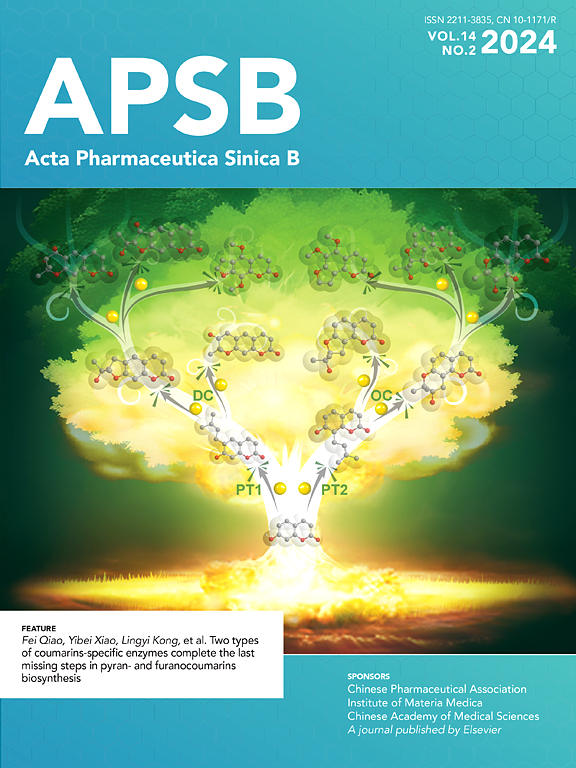YOD1 regulates microglial homeostasis by deubiquitinating MYH9 to promote the pathogenesis of Alzheimer's disease
IF 14.7
1区 医学
Q1 PHARMACOLOGY & PHARMACY
引用次数: 0
Abstract
Alzheimer's disease (AD) is the major form of dementia in the elderly and is closely related to the toxic effects of microglia sustained activation. In AD, sustained microglial activation triggers impaired synaptic pruning, neuroinflammation, neurotoxicity, and cognitive deficits. Accumulating evidence has demonstrated that aberrant expression of deubiquitinating enzymes is associated with regulating microglia function. Here, we use RNA sequencing to identify a deubiquitinase YOD1 as a regulator of microglial function and AD pathology. Further study showed that YOD1 knockout significantly improved the migration, phagocytosis, and inflammatory response of microglia, thereby improving the cognitive impairment of AD model mice. Through LC–MS/MS analysis combined with Co-IP, we found that Myosin heavy chain 9 (MYH9), a key regulator maintaining microglia homeostasis, is an interacting protein of YOD1. Mechanistically, YOD1 binds to MYH9 and maintains its stability by removing the K48 ubiquitin chain from MYH9, thereby mediating the microglia polarization signaling pathway to mediate microglia homeostasis. Taken together, our study reveals a specific role of microglial YOD1 in mediating microglia homeostasis and AD pathology, which provides a potential strategy for targeting microglia to treat AD.

求助全文
约1分钟内获得全文
求助全文
来源期刊

Acta Pharmaceutica Sinica. B
Pharmacology, Toxicology and Pharmaceutics-General Pharmacology, Toxicology and Pharmaceutics
CiteScore
22.40
自引率
5.50%
发文量
1051
审稿时长
19 weeks
期刊介绍:
The Journal of the Institute of Materia Medica, Chinese Academy of Medical Sciences, and the Chinese Pharmaceutical Association oversees the peer review process for Acta Pharmaceutica Sinica. B (APSB).
Published monthly in English, APSB is dedicated to disseminating significant original research articles, rapid communications, and high-quality reviews that highlight recent advances across various pharmaceutical sciences domains. These encompass pharmacology, pharmaceutics, medicinal chemistry, natural products, pharmacognosy, pharmaceutical analysis, and pharmacokinetics.
A part of the Acta Pharmaceutica Sinica series, established in 1953 and indexed in prominent databases like Chemical Abstracts, Index Medicus, SciFinder Scholar, Biological Abstracts, International Pharmaceutical Abstracts, Cambridge Scientific Abstracts, and Current Bibliography on Science and Technology, APSB is sponsored by the Institute of Materia Medica, Chinese Academy of Medical Sciences, and the Chinese Pharmaceutical Association. Its production and hosting are facilitated by Elsevier B.V. This collaborative effort ensures APSB's commitment to delivering valuable contributions to the pharmaceutical sciences community.
 求助内容:
求助内容: 应助结果提醒方式:
应助结果提醒方式:


